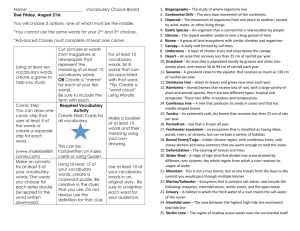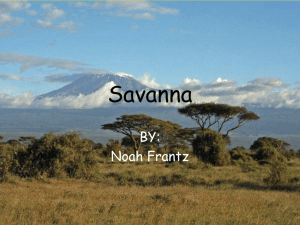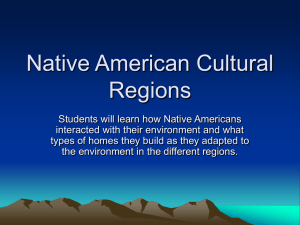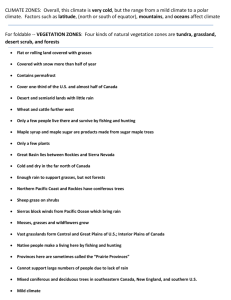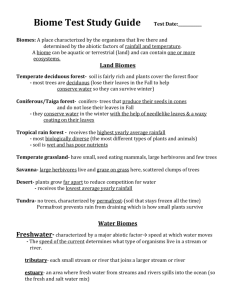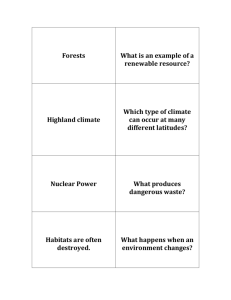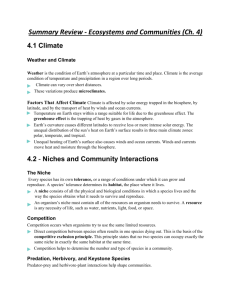Terrestrial Biomes
advertisement
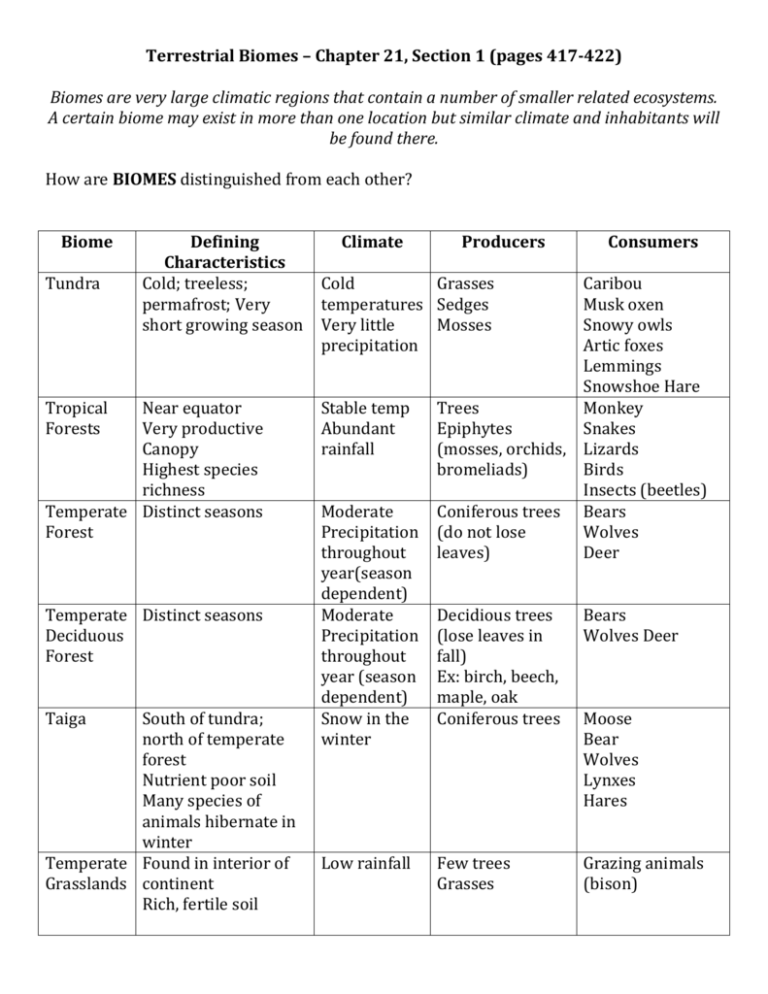
Terrestrial Biomes – Chapter 21, Section 1 (pages 417-422) Biomes are very large climatic regions that contain a number of smaller related ecosystems. A certain biome may exist in more than one location but similar climate and inhabitants will be found there. How are BIOMES distinguished from each other? Biome Tundra Defining Characteristics Cold; treeless; permafrost; Very short growing season Tropical Forests Near equator Very productive Canopy Highest species richness Temperate Distinct seasons Forest Temperate Distinct seasons Deciduous Forest Taiga South of tundra; north of temperate forest Nutrient poor soil Many species of animals hibernate in winter Temperate Found in interior of Grasslands continent Rich, fertile soil Climate Producers Consumers Cold Grasses temperatures Sedges Very little Mosses precipitation Stable temp Abundant rainfall Moderate Precipitation throughout year(season dependent) Moderate Precipitation throughout year (season dependent) Snow in the winter Low rainfall Caribou Musk oxen Snowy owls Artic foxes Lemmings Snowshoe Hare Trees Monkey Epiphytes Snakes (mosses, orchids, Lizards bromeliads) Birds Insects (beetles) Coniferous trees Bears (do not lose Wolves leaves) Deer Decidious trees (lose leaves in fall) Ex: birch, beech, maple, oak Coniferous trees Bears Wolves Deer Few trees Grasses Grazing animals (bison) Moose Bear Wolves Lynxes Hares Savanna Like grasslands Chaparral Periodic fires Middle latitudes (costal regions) Desert Dry More rainfall then desert, less than termperate Alternating wet and dry season Mild, rainy winters Hot, dry summers Grasses Scattered deciduous trees and shrubs Zebras Wildebeests Giraffes Gazelles Lions leopards Dense, spiny Similar to savana shrubs Scattered clumps of coniferous trees Less than Creosote bush Kit foxes 25cm rainfall Cacti Lizards Not always Snakes hot Questions- Write your answers in complete sentences and thoughts on loose leaf paper. Please answer questions 7-9 on page 369 and questions 7 – 10 on page 422.
